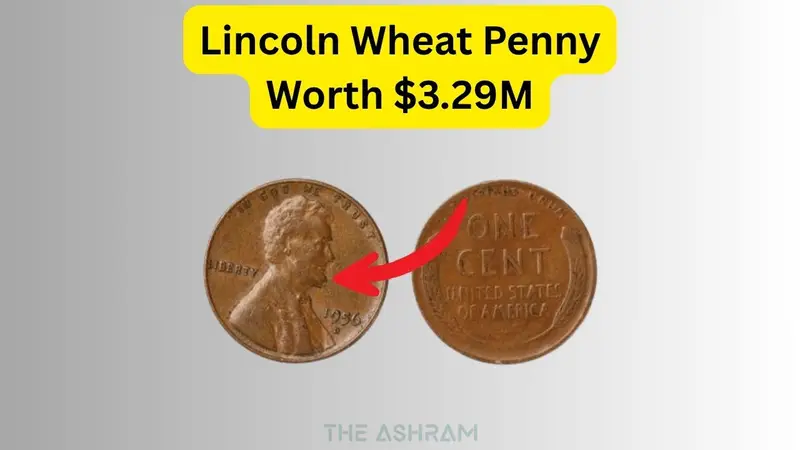Imagine stumbling across a penny in your pocket change that’s worth more than a luxury car or even a house! The Lincoln Wheat Penny, a seemingly humble coin, has captured the hearts of collectors and made headlines with its jaw-dropping auction prices. One such penny sold for an astonishing $329,000, proving that small change can carry massive value. Let’s dive into the fascinating world of this iconic coin, exploring its history, rarity, and why it’s a treasure worth hunting for.
What Makes the Lincoln Wheat Penny So Special?
The Lincoln Wheat Penny, first minted in 1909 to commemorate Abraham Lincoln’s 100th birthday, is one of the most beloved coins in American history. Designed by Victor David Brenner, it was the first U.S. coin to feature a president’s portrait, making it a groundbreaking piece of numismatic art. The “wheat” in its name comes from the two wheat stalks framing the reverse side, a design that ran until 1958.
What turns an ordinary penny into a $329,000 treasure? It’s all about rarity, condition, and historical significance. Certain years, mint marks, and errors make specific Lincoln Wheat Pennies highly sought after. Let’s break down the key factors that drive their value.
Read More: Rare Kennedy Half Dollar Worth Millions
The Role of Rarity and Mint Marks
Not all Lincoln Wheat Pennies are created equal. Coins from specific years or mints, like the 1909-S VDB or the 1943 Bronze Penny, are incredibly rare. The “S” mint mark, indicating the San Francisco Mint, often signals a low mintage, boosting a coin’s value. For example, the 1909-S VDB penny, with only 484,000 minted, is a collector’s holy grail. Combine rarity with pristine condition, and you’ve got a recipe for a six-figure sale.
Errors That Turn Pennies Into Gold
Minting errors can transform a penny into a numismatic superstar. Take the 1943 Bronze Penny, for instance. During World War II, pennies were made from zinc-coated steel to conserve copper, but a few bronze planchets were accidentally used, creating one of the rarest coins ever. One such penny fetched $329,000 at auction due to its scarcity and historical quirk. Other errors, like doubled dies or off-center strikes, also skyrocket a penny’s value.
The 1943 Bronze Penny: A Wartime Wonder
The 1943 Bronze Penny is a legend in the coin-collecting world. With only a handful known to exist, it’s a fluke of minting history. Most 1943 pennies are steel, but the bronze versions were mistakes that slipped through the cracks. Finding one is like winning the lottery, and collectors are willing to pay top dollar for these wartime relics.
Why Collectors Go Crazy for Lincoln Wheat Pennies
Beyond rarity, the Lincoln Wheat Penny holds a special place in collectors’ hearts. Its connection to Abraham Lincoln, a symbol of American resilience, adds emotional weight. The coin’s design, with its detailed portrait and elegant wheat stalks, is a testament to early 20th-century artistry. Plus, the thrill of the hunt—finding a valuable penny in a jar of loose change—keeps collectors hooked.
Condition Is King
In the world of coin collecting, condition is everything. A penny in “Mint State” (MS) condition, meaning it’s untouched by wear, can be worth thousands more than a circulated one. Grading services like PCGS or NGC assign scores from 1 to 70, with higher grades commanding higher prices. The $329,000 penny was likely in near-perfect condition, making it a standout at auction.
How to Spot a Valuable Lincoln Wheat Penny
Think you might have a treasure in your piggy bank? Here’s a quick guide to spotting a valuable Lincoln Wheat Penny:
| Year | Mint Mark | Key Feature | Estimated Value |
|---|---|---|---|
| 1909-S | VDB | Initials on reverse | $1,000–$329,000+ |
| 1943 | None/S/D | Bronze error | $100,000–$329,000+ |
| 1955 | None | Doubled die | $500–$25,000+ |
- Check the Date and Mint Mark: Look for key years like 1909, 1914, or 1943, and mint marks (S, D, or none for Philadelphia).
- Inspect for Errors: Look for doubled text, off-center strikes, or unusual metal composition.
- Evaluate Condition: Shiny, unblemished coins are worth more. Use a magnifying glass to check for wear.
Conclusion: A Penny Saved Could Be a Fortune Earned
The Lincoln Wheat Penny is more than just pocket change—it’s a piece of American history with the potential to make you rich. Whether it’s the rare 1909-S VDB or the elusive 1943 Bronze Penny, these coins remind us that treasures can hide in plain sight. Next time you find a penny, take a closer look—you might just be holding a $329,000 masterpiece. Happy hunting!
FAQs About Lincoln Wheat Pennies
What is the most valuable Lincoln Wheat Penny?
The 1943 Bronze Penny is among the most valuable, with some selling for $329,000 or more due to its rarity as a minting error.
How can I tell if my penny is rare?
Check the date, mint mark, and condition. Key dates like 1909-S VDB or 1943 Bronze are rare, especially in high-grade condition.
Where can I sell a valuable penny?
Reputable auction houses, coin dealers, or grading services like PCGS or NGC are great places to start. Always get your coin appraised first.
Why are some pennies worth so much?
Rarity, minting errors, and pristine condition drive value. Historical significance and collector demand also play a big role.
